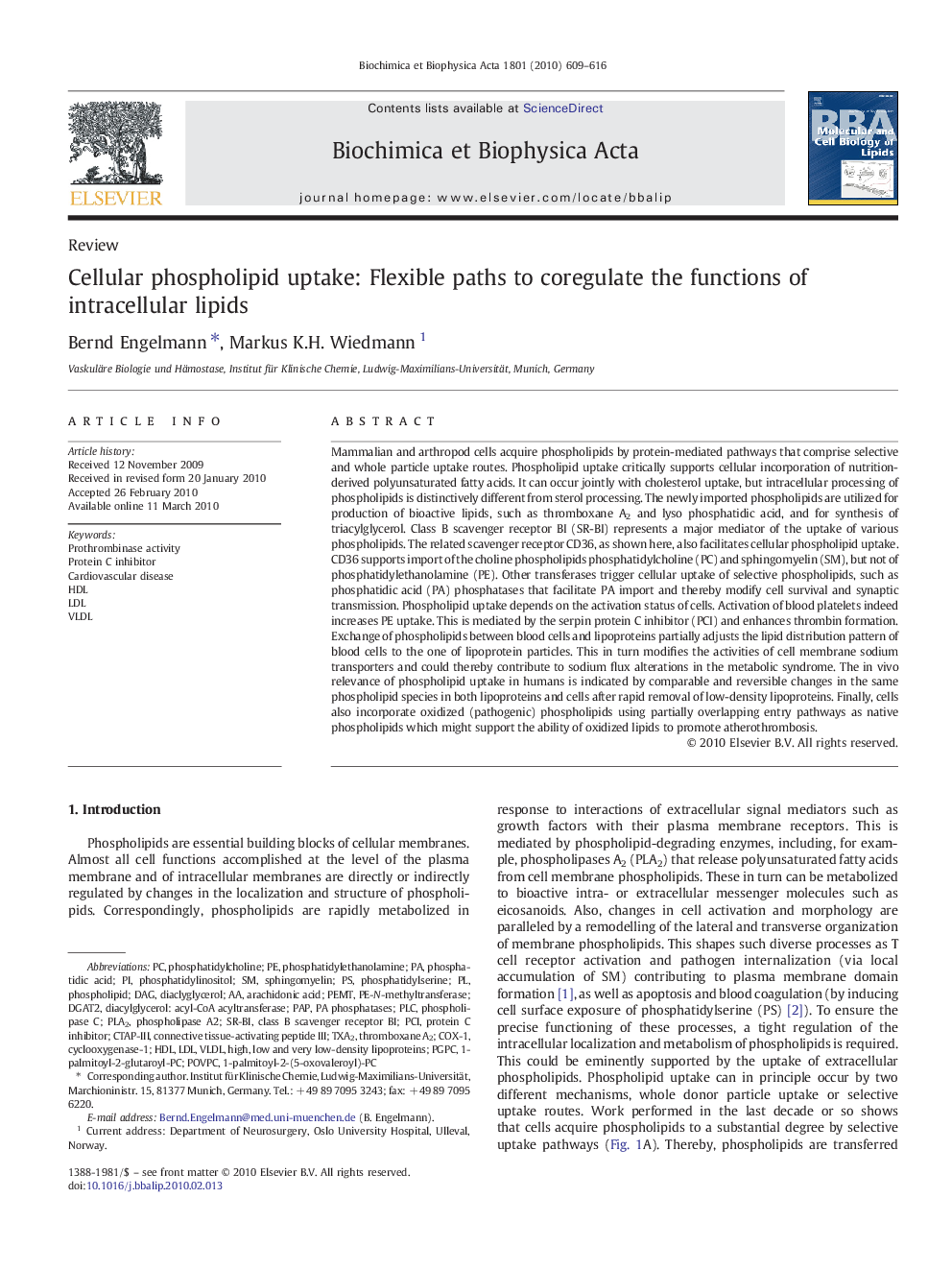| کد مقاله | کد نشریه | سال انتشار | مقاله انگلیسی | نسخه تمام متن |
|---|---|---|---|---|
| 1949603 | 1537776 | 2010 | 8 صفحه PDF | دانلود رایگان |

Mammalian and arthropod cells acquire phospholipids by protein-mediated pathways that comprise selective and whole particle uptake routes. Phospholipid uptake critically supports cellular incorporation of nutrition-derived polyunsaturated fatty acids. It can occur jointly with cholesterol uptake, but intracellular processing of phospholipids is distinctively different from sterol processing. The newly imported phospholipids are utilized for production of bioactive lipids, such as thromboxane A2 and lyso phosphatidic acid, and for synthesis of triacylglycerol. Class B scavenger receptor BI (SR-BI) represents a major mediator of the uptake of various phospholipids. The related scavenger receptor CD36, as shown here, also facilitates cellular phospholipid uptake. CD36 supports import of the choline phospholipids phosphatidylcholine (PC) and sphingomyelin (SM), but not of phosphatidylethanolamine (PE). Other transferases trigger cellular uptake of selective phospholipids, such as phosphatidic acid (PA) phosphatases that facilitate PA import and thereby modify cell survival and synaptic transmission. Phospholipid uptake depends on the activation status of cells. Activation of blood platelets indeed increases PE uptake. This is mediated by the serpin protein C inhibitor (PCI) and enhances thrombin formation. Exchange of phospholipids between blood cells and lipoproteins partially adjusts the lipid distribution pattern of blood cells to the one of lipoprotein particles. This in turn modifies the activities of cell membrane sodium transporters and could thereby contribute to sodium flux alterations in the metabolic syndrome. The in vivo relevance of phospholipid uptake in humans is indicated by comparable and reversible changes in the same phospholipid species in both lipoproteins and cells after rapid removal of low-density lipoproteins. Finally, cells also incorporate oxidized (pathogenic) phospholipids using partially overlapping entry pathways as native phospholipids which might support the ability of oxidized lipids to promote atherothrombosis.
Journal: Biochimica et Biophysica Acta (BBA) - Molecular and Cell Biology of Lipids - Volume 1801, Issue 6, June 2010, Pages 609–616